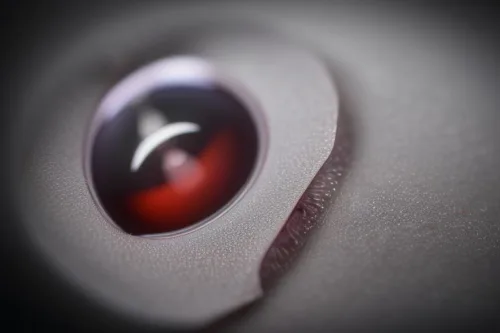Fatty liver disease – Top 7 things to keep in mind


Fatty liver disease – things to keep in mind
The most common type of liver disorder, it can cause a buildup of fat in the liver.It can be caused by factors such as alcohol abuse, diabetes, chronic inflammation and viral infection.
Liver disease is a lifelong condition which can lead to cirrhosis, where the liver becomes scarred and cannot function properly.Known as fatty liver, if it is left untreated it can lead to liver failure, cancer and even death.
The liver is a vital organ that plays a crucial role in digestion, metabolism, and detoxification of the body. However, it can be prone to various disorders, and one of the most common types of liver disorders is fatty liver disease. It is a condition where there is an abnormal accumulation of fat in the liver cells, which can cause inflammation and scarring of the liver tissue.
Fatty liver disease can be caused by a variety of factors, including alcohol abuse, diabetes, chronic inflammation, and viral infections. Alcohol consumption can lead to the deposition of fat in the liver, causing inflammation and scarring. Similarly, diabetes can also cause fat accumulation in the liver, as the body struggles to regulate blood sugar levels. Chronic inflammation and viral infections, such as hepatitis, can also damage liver cells and lead to fatty liver disease.
If left untreated, fatty liver disease can progress to liver cirrhosis, a condition where the liver becomes scarred and cannot function properly. This can lead to liver failure, liver cancer, and even death. Therefore, it is essential to detect and treat fatty liver disease in its early stages to prevent complications.
The symptoms of fatty liver disease can be non-specific and may not be present in the early stages. However, as the disease progresses, symptoms such as fatigue, abdominal discomfort, loss of appetite, and nausea may occur. In advanced stages, patients may experience jaundice, swelling in the legs and abdomen, and easy bruising or bleeding.
Diagnosis of fatty liver disease typically involves a combination of physical examination, medical history, and laboratory tests. Blood tests can help identify risk factors such as diabetes, high cholesterol, and liver enzymes. Imaging tests such as ultrasound, CT, or MRI scans can also help identify fat accumulation in the liver. Liver biopsy is the most definitive method of diagnosis, but it is an invasive procedure that carries risks.
Treatment of fatty liver disease primarily focuses on addressing the underlying cause. For instance, patients with alcohol-related fatty liver disease must stop drinking alcohol entirely. Those with diabetes must manage their blood sugar levels through diet, exercise, and medication. Weight loss through a healthy diet and exercise can also help reduce fat accumulation in the liver. In some cases, medications such as pioglitazone may be prescribed to reduce liver inflammation.
In conclusion, fatty liver disease is a common liver disorder that can have severe consequences if left untreated. It is crucial to be aware of the risk factors and symptoms of fatty liver disease and seek medical attention if they occur. Early detection and treatment can help prevent complications and improve the quality of life for patients with fatty liver disease.
The NHS England is encouraging more than 40,000 doctors and healthcare professionals to sign up to the first ever national patient strategy for liver disease.But people with liver disease shouldn’t just settle for the minimum in treatments, with a range of advances coming in the field.
Here are five things you need to know about the condition and treatments:
1. Excess fat in the liver can be a warning sign
The liver is a gland at the top of the abdomen that acts as a store house for fat and is responsible for burning stored fat.About 30% of the body’s stores of fat are stored in the liver, and without it, the body would have to burn its stored fat for energy.But over time fatty tissue can be accumulated in the liver and in some individuals, it can cause problems.
Excess fat in the liver is not a good thing, especially if there is an underlying cause such as type 2 diabetes.
2. Hepatitis C is another cause

Hepatitis C is caused by the hepatitis C virus. This virus affects the liver, and the viruses can be passed on from person to person.It is possible for some people to carry the virus without developing any symptoms.
If symptoms develop, they can be similar to flu or shingles, and include a fever, fatigue, nausea and headache.However, it can also be fatal.If the virus is not cleared in time, it can lead to cirrhosis and liver cancer.
If people with cirrhosis develop liver cancer, it’s very rare, but they are less likely to survive than those with liver cancer who don’t have cirrhosis.Most people with cirrhosis will die within a year, but liver cancer can be fatal, if it’s detected in time.
Patients are advised to take a test to check if they are infected with hepatitis C if they have been treated for a long time, as this can also increase the risk of cancer.
3. Alcohol plays a role

It’s possible that alcohol can be a contributor to fatty liver disease.It has been shown that in people with cirrhosis, drinking the equivalent of two standard drinks a day for men or one standard drink a day for women was associated with a larger build-up of fat in the liver than those who didn’t drink.
But what’s less clear is whether drinking too much alcohol also contributes to the condition.
It’s thought that alcohol can damage the liver cells, which can make them accumulate more fat, even if they are not aware they are affected.However, a person can still drink alcohol and not get liver damage.However, drinking too much can be deadly and binge drinking can cause liver damage or worse.To stay safe, many people with fatty liver disease cut down on their alcohol intake.
4. Organ transplants
If a liver is not enough, then patients may need a transplant.In 2016, there were 320 people waiting for a new liver, with numbers falling every year.NHS Blood and Transplant say that this is because of a greater focus on supporting people who are on the transplant waiting list and encouraging people to give up alcohol, to reduce the risk of having a liver transplant.
In recent years, a new donor option has been introduced, allowing people to be a living liver donor.Living liver donors have their own healthy liver, but can only donate part of it.The organ is then matched with a liver which has problems and a liver transplant is performed.While this option is helping to save lives, most people will need a liver transplant at some point in their lifetime.
5. More than one disease
A range of conditions can lead to excess fat in the liver, including cancer and liver diseases.To get rid of the extra fat, you need to manage all of these conditions.Factors such as genetics, high blood pressure, obesity and diabetes, can all cause fatty liver disease.
Other causes of fatty liver disease include chronic inflammation or problems with alcohol or liver damage after a liver transplant.Cirrhosis, cancer and viral hepatitis can also affect the liver, which in some cases can contribute to fatty liver disease.Although, this is unlikely to be a significant contributor.
6. Imbalances in blood fat levels
A healthy liver also helps to remove excess fat from the body through the liver’s detoxification system.
This removes certain waste products from the blood, but if the liver becomes damaged it can also cause fat to build up.In general, liver damage will cause higher levels of triglycerides in the blood.However, higher levels can sometimes be due to high blood levels of fat in general.Triglycerides are tiny fatty molecules made of fat and cholesterol.Some of these are shed in your poo, but also some are stored in your fat tissue.
If the liver is damaged or enlarged, this fat can end up in the bloodstream.
Normally, this is considered a good thing because excess fat in the blood is often carried away by the blood’s thinning, called ‘lipoprotein outflow’.
However, sometimes this process can fail and so some of the fat can end up in the blood.This is called ‘lipoprotein accumulation’.In the long-term, it can be harmful, because it can cause obesity.Diabetes is also related to this condition, because the liver is very good at absorbing insulin.One risk is that excess fat in the liver can lead to ‘metabolic syndrome’, which is a combination of risk factors for heart disease and type 2 diabetes.
This is a serious risk factor and often requires treatment.
7. Drugs
Most of the risk factors of fatty liver disease are treatable.
However, certain drugs – some prescribed for other conditions, such as hypertension and diabetes – can also increase the amount of fat in the liver.
Some drugs are also given to people to reduce the amount of fat in their blood, such as insulin.The drug divalproex sodium is often given to people with diabetes. Divalproex can cause people to accumulate fatty liver disease, especially if they are also taking other medicines that reduce insulin sensitivity.It is not clear if this causes the condition or if it is a reaction to taking divalproex.
Other drugs that are known to increase fat in the liver include tacrolimus and metoprolol, both of which are often used to treat a wide range of conditions, including heart disease and kidney disease.
What is fatty liver disease? Fatty liver disease is a serious condition, in which fat is stored in the liver. Liver cirrhosis can be a serious complication of fatty liver disease. It’s a severe condition, but there is hope as it can be treated.
The NHS have these tips to help you.
- Have more fruit and veg
- Cut down on saturated fats
- Lose weight if you’re overweight
- Limit alcohol
- If you have fatty liver, make your doctor aware if you have diabetes or high blood pressure, so they can monitor your condition more closely This article originally appeared in The Sun and has been republished here with permission.



